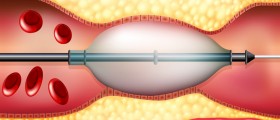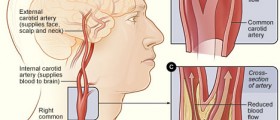What Kind of Procedure is Angiogram and When is it Done?
Angiography is an imaging procedure, which is used when it is necessary to see the inside of organs or blood vessels. This procedure is particularly used in cases of various heart conditions when the heart chambers, veins and arteries have to be checked. The patient who is about to undergo this procedure has to be administered with a type of dye into the blood vessels of the heart, and an X-ray machine will take a number of images that will provide a detailed insight into the inside of the blood vessels in question. Angiogram is another name for the image of the blood vessels checked.

Cases in which angiography is done are cases in which patients experience symptoms of some coronary artery disease, pain in the chest, neck or arm that other tests fail to explain, and symptoms that indicate chest injury, as well as in cases of heart failure, heart defect that is congenital, or heart valve problems that call for a surgery. People who are at high risk of experiencing heart attack or any other heart related problem, and those who are about to have surgery may need to undergo angiography.
What Risks and Side Effects are Related to this Procedure?
In spite of the fact that this is a very useful and helpful procedure, there is a small risk of complications and side effects, which is why procedures such as electrocardiogram, echocardiogram and stress test are usually done first. However, serious and major complications and side effects are rare. Still, among the unexpected effects of this procedure the patient may experience blood clots, infections, allergic reaction to the dye or some medications that may have been used during the procedure, irregular heart rhythm and radiation exposure form the X-rays. Besides these problems, what may also occur is an injury to the artery, bleeding or bruising at the site of injection, as well as heart attack or stroke. Mild side effects that suggest a reaction to the dye include nausea, vomiting, skin rash or lower blood pressure, but all of these are common.
- You will likely have bruising (ecchymosis) where the artery was entered.
- Less commonly, patients experience pain and bleeding that may include blood collecting under the skin (hematoma).
- In rare cases, the access artery can become blocked. Infrequently, patients experience persistent leakage of blood where the artery was entered, which can result in the formation of a pseudoaneurysm—a blood-filled sac—that may require further treatment.
- Allergic reaction to the iodine contrast dye, which can lead to the development of kidney failure.
- Very rarely during balloon angioplasty and/or stent placement, part of the arterial blockage can break off (embolism) and travel to more distant arteries. This can worsen blood flow.
In order to reduce the risks to the minimum, it is important to prepare well for this procedure, which means that after the midnight, the patient should not eat or drink anything. Besides this, it is necessary to ask the doctor about the medications that may or may not be taken before the procedure in case a person suffers from diabetes or some heart condition.

















Your thoughts on this
Loading...